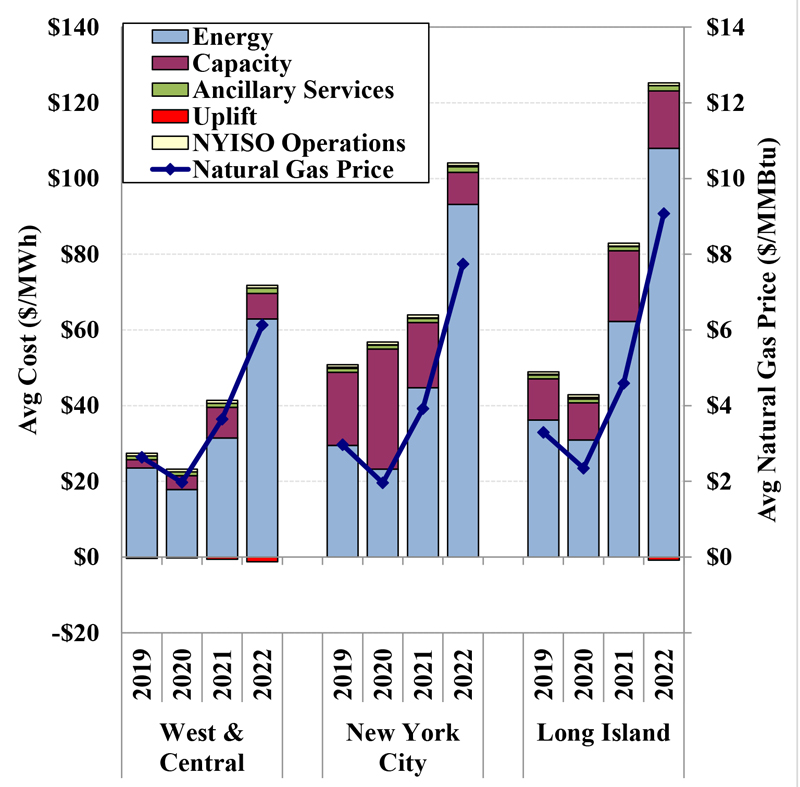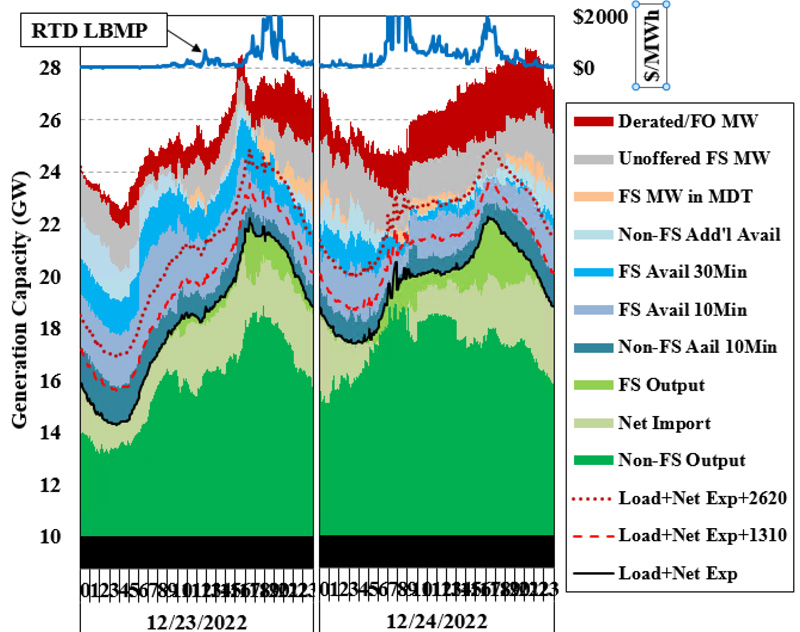NAPA, Calif. — The CEOs of the state’s three largest utilities and CAISO sat down for a panel discussion last week on switching to clean energy and maintaining reliability amid extreme heat, destructive storms and pandemic-caused supply chain problems.
“Today in the West, we face many common challenges in the energy sector,” said California Public Utilities Commissioner John Reynolds, who moderated the discussion at the Western Conference of Public Service Commissioners’ annual meeting at a Napa Valley golf resort.
“We ask ourselves common questions like, ‘How do we integrate the increasing amount of renewables on the grid?’” Reynolds said. “‘How do we plan for and adapt to extreme weather events and changing climate, which affect customer demand, generation resources and infrastructure in ways that we are still continuing to understand? In the face of these challenges and others, how do we ensure that customers are delivered clean, affordable and reliable energy?’”
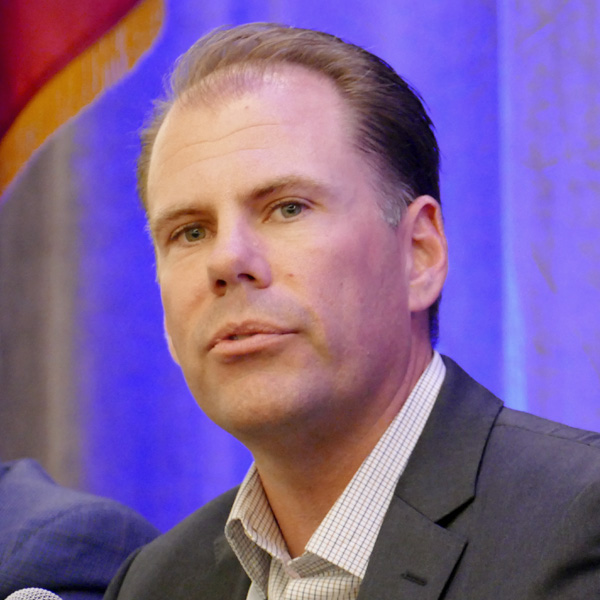 SCE CEO Steve Powell | © RTO Insider LLC
SCE CEO Steve Powell | © RTO Insider LLCThe panelists who addressed Reynolds’ questions were CAISO CEO Elliot Mainzer, California Energy Commission Vice Chair Siva Gunda, Pacific Gas and Electric (NYSE:PCG) CEO Patti Poppe, Southern California Edison (NYSE:EIX) CEO Steven Powell and San Diego Gas & Electric (NYSE:SRE) CEO Caroline Winn.
Reynolds asked first about wildfires and extreme weather. To Powell, he posed a question about how SCE had employed “situational awareness” to deal with wildfires.
“Over the last five years, we’ve installed more than 1,600 weather stations on our circuits in high fire threat areas,” Powell responded. “That means most circuits have two to three weather stations on them. Those weather stations give us enough granularity, when combined with other forecasts and detailed models, to get a lot more targeted about where we have to deploy our public safety power shutoffs.”
Power safety power shutoffs (PSPS) are the intentional blackouts Western utilities use to prevent their equipment from sparking wildfires during dry, windy conditions, usually in late summer and fall. When SCE started using PSPS in 2018, it would turn off entire substations or service areas.
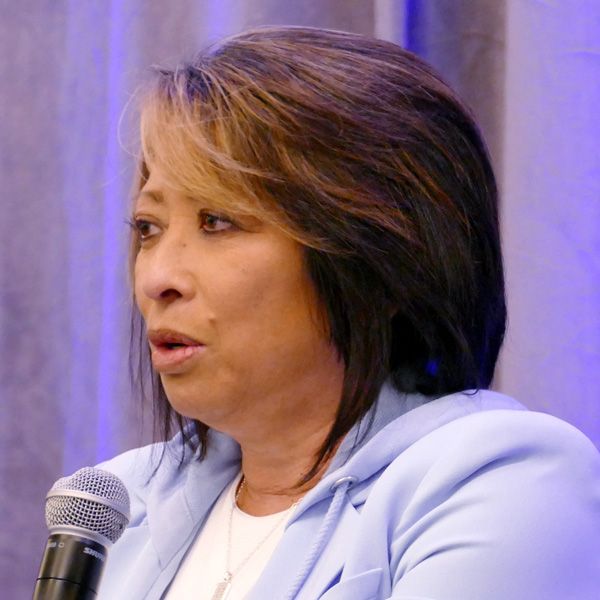 PG&E CEO Patti Poppe | © RTO Insider LLC
PG&E CEO Patti Poppe | © RTO Insider LLC“We’re now able to break that down and get specific parts of circuits to take off, and it’s allowed us to decrease the amount of customers [affected by] a PSPS outage by 80 to 90% in most cases,” Powell said. “So that’s been a huge part of that situational awareness.”
Reynolds asked Poppe about this winter’s series of “atmospheric river” storms that drenched California between December and March.
“Can you tell us about the operational challenges that these kinds of extraordinary events present for utilities?” he asked.
The season started with a 6.2-magnitude earthquake off the coast of Northern California that knocked out power to thousands of customers, followed by one storm after another that wreaked havoc on PG&E’s infrastructure, Poppe noted. Starting with the quake, “we were in emergency response mode until mid-April, so we definitely had a lot of opportunities to learn,” she said.
“We would have an atmospheric river with 400,000 customers out and back on within 24 hours; 300,000 customers out and back on within 24 hours. It just went on and on and on,” Poppe said.
Weather forecasts and advance preparation played a big part, she said.
“We could pre-stage things like backup generation and substations before the storm hit,” she said. “So, we could respond and have the crews in the right places at the right time and have our resources and our equipment in the right places at the right time, and that is extraordinarily effective.”
Mutual assistance from other Western utilities helped PG&E cope, she said.
“We could not have gotten through all of these events without the support from all of the states and all of the utilities in the West who, when we called, you answered,” she told the audience.
Supply Chain Issues
Reynolds asked Winn about how SDG&E had dealt with supply chain issues at a time when utilities are “contracting and building swiftly to meet our midterm reliability needs.”
The state has struggled with blackouts and near misses the past three summers, and utilities have been connecting thousands of megawatts of new clean energy and storage resources to head off further problems.
 SDG&E CEO Caroline Winn | © RTO Insider LLC
SDG&E CEO Caroline Winn | © RTO Insider LLC“When you think about the work that we’re doing on climate change adaptation … [and] extreme weather; when you think about the work that we’re doing to meet California’s aggressive clean energy goals; and when you think about the pandemic, everything that we need to do needs to be different,” Winn said. “It needs to be different than we have historically done.”
For years, SDG&E bought materials on a “just-in-time” basis, ordering from suppliers a few weeks before materials were needed.
The pandemic changed that, requiring longer-term planning, she said. Complications from adding large amounts of rooftop solar power and demand from electric vehicle charging are also “changing the game.”
SDG&E has seen demand drop by 2% a year since 2014 because many property owners are adding rooftop solar panels,” Winn said. But the utility is now expecting large increases from EV adoption, which jumped 25% in one year in San Diego, and from homeowners who are swapping out gas appliances for electric heat pumps, water heaters and stovetops.
The utility is also tripling the amount of storage on its system and needs dozens of larger transformers to handle the 70 powerful DC fast chargers it plans to install.
“All of that needs supply chain, and we can’t do things the way that we used to,” Winn said. “Now we have to meet with all of our major customers and understand: ‘What is your electrification plan? What is your load-growth plan?’ And be able to plan for that in a much more detailed way. It’s just required.
“We’re ordering things early, whether we need it or not,” she said.
Load Forecasting
Gunda said the CEC’s load forecast is changing because of vehicle and building electrification.
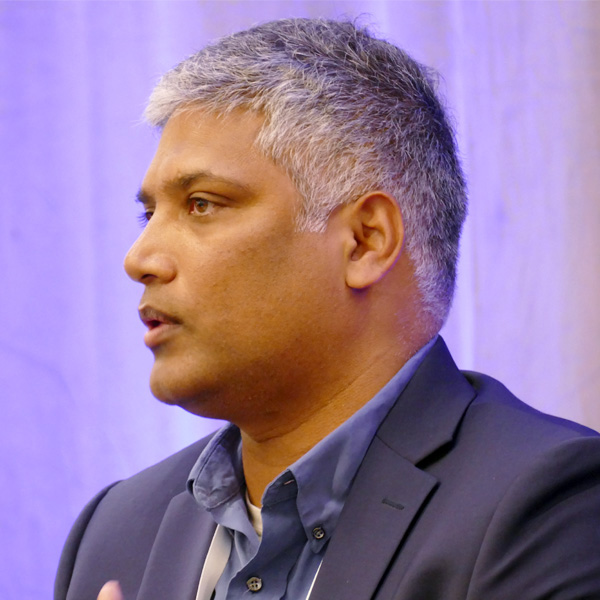 CEC Vice Chair Siva Gunda | © RTO Insider LLC
CEC Vice Chair Siva Gunda | © RTO Insider LLCCalifornia recently hit its goal, two years ahead of schedule, of having 1.5 million EVs on the road. The state is aiming to entice property owners to install 6 million heat pumps in the coming years.
“All of these things bring uncertainty” in load forecasting, Gunda said.
The CEC has begun using demand forecasts with base case and high-electrification scenarios. In the high-electrification scenario, it plans for 6 million EVs by 2030, even though that may not happen.
It’s also factoring in extreme weather, he said.
“In 2022, for most of the year, we were tracking average weather in California,” he said. But during a severe heat wave that spanned 10 days in September, “we deviated 15% from what our planning assumption was. So, we were 7,000 MW off what we were expecting in September. That’s what we’re trying to bring into our forecast.”
Western Markets
The September 2022 heat wave drove CAISO to the brink of ordering rolling blackouts for the second time in three years.
How can Western states collaborate to serve customers in extreme weather? Reynolds asked.
 CAISO CEO Elliot Mainzer | © RTO Insider LLC
CAISO CEO Elliot Mainzer | © RTO Insider LLCMainzer said CAISO’s interstate Western Energy Imbalance Market (WEIM) has been important for regional reliability and could be even more effective if it expands from a real-time market to a day-ahead platform, as planned. The ISO is preparing tariff language to send to FERC for a WEIM extended day-ahead market (EDAM).
“Last summer, when we were right in the middle of that incredible heat wave, there was a lot of focus on California’s [strained grid] … but there was also all-time record demand in the Western United States,” Mainzer said. “We had 167,500 MW of demand [in the Western Interconnection] on Sept. 6, 2022, so California was in distress, but other parts of the West were also struggling.”
“It was kind of amazing, from the control center, to watch the Energy Imbalance Market as it was cycling energy around on a five-minute basis across the West, helping not only California but other parts of the West that were struggling with reliability to keep the lights on,” he said.
If CAISO has a day-ahead market, “where we could look out across the broader footprint in the incredibly diverse Western United States and have the visibility into the overall sufficiency of that footprint, we would be able to move electricity to where it is most needed to be able to pre-emptively mitigate energy emergencies,” Mainzer said.
Energy emergencies in California the last three summers made wholesale electricity prices soar at key Western trading hubs.
A West-wide day-ahead market would also bring reliability benefits during times of “volatility and uncertainty that we see on the grid. It’s going to be the reliability component of regional coordination that I think more and more is going to see an even greater value,” Mainzer said.
